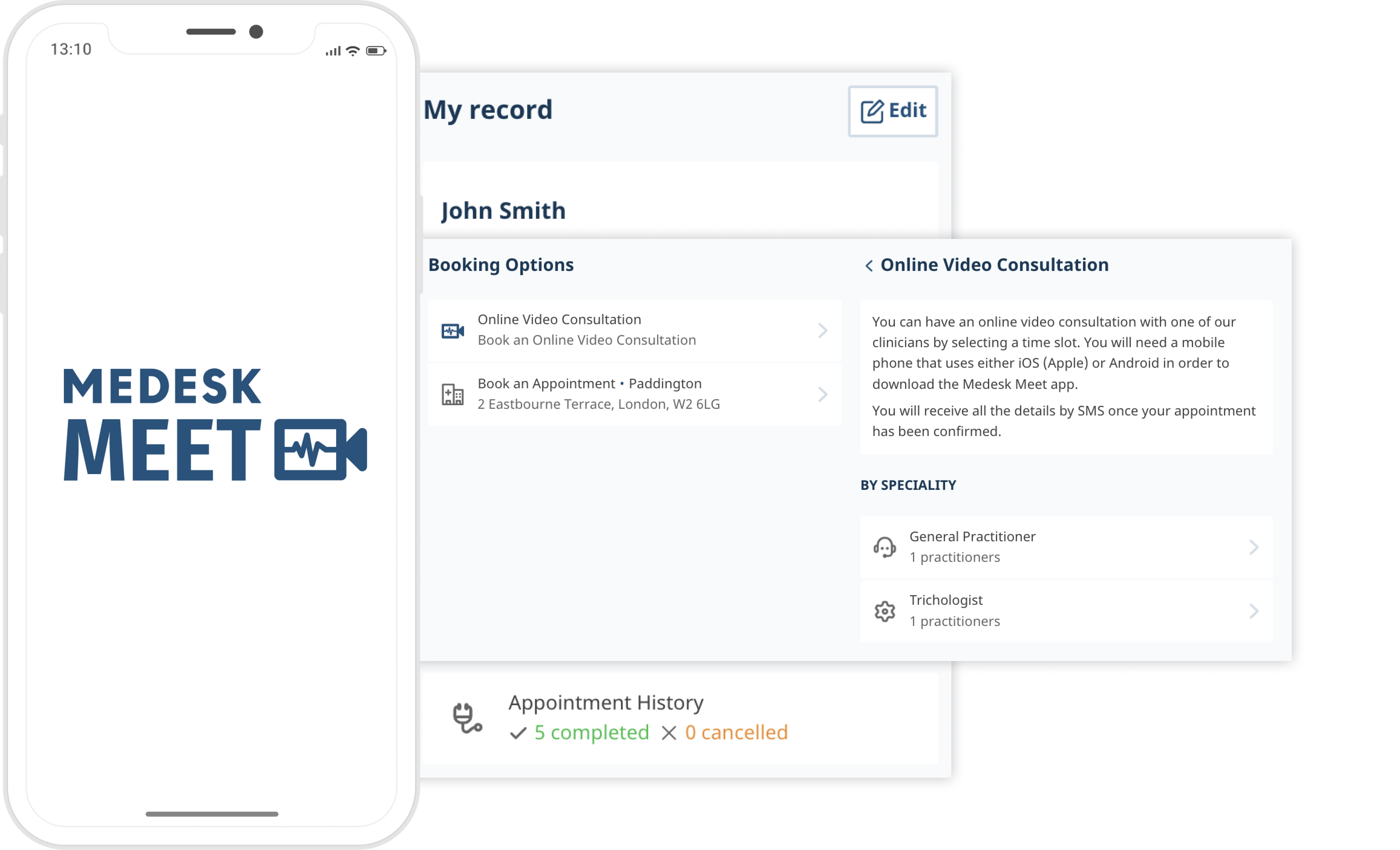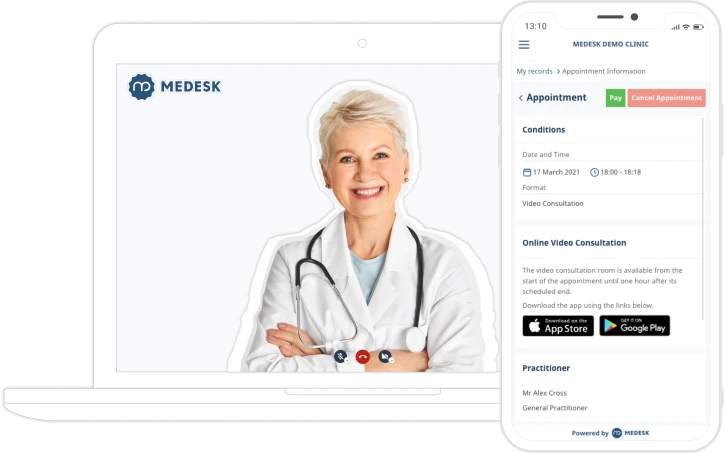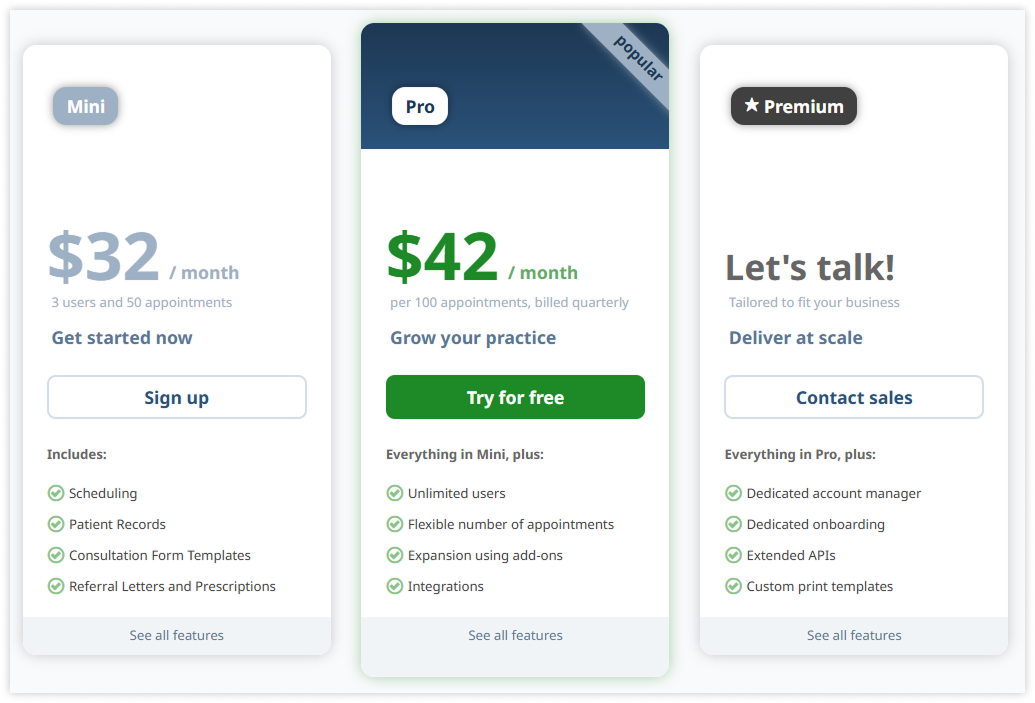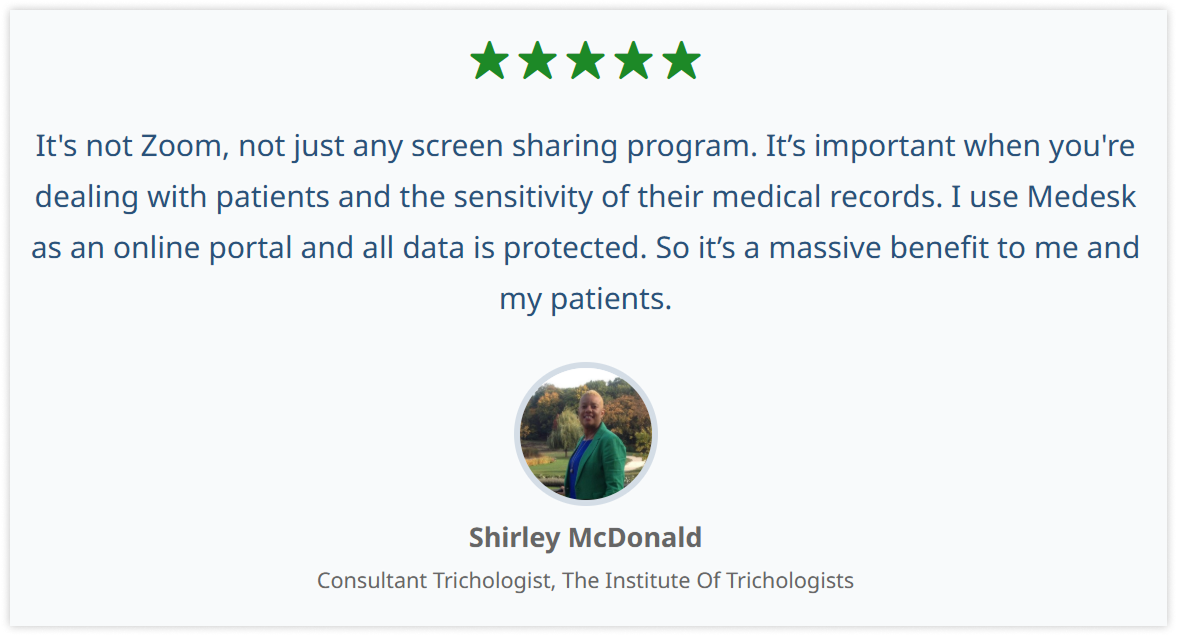Essentially, telemedicine refers to using technology to allow medical practitioners to provide remote healthcare. No matter the distance or time zone difference, telemedicine connects patients with healthcare practitioners as well as allows healthcare practitioners to collaborate with other medical professionals.
Telemedicine can greatly enhance your medical practice, allowing you to provide healthcare services for patients that aren’t able to visit a doctor in person due to their remote location, financial situation, or health conditions.
However, developing a custom telehealth application from scratch can be a time-consuming and expensive process. The development cost of a telemedicine app typically ranges from $50,000 to $250,000+.
Yet, adopting telemedicine poses a question: should you invest in telemedicine app development services to create a custom telemedicine app, or opt for a proven, ready-made telemedicine platform?
Custom application development offers tailored functionality, but it comes with steep costs, lengthy timelines, and technical challenges. Instead, ready-made telemedicine app development solutions offer a cost-effective and user-friendly alternative. These platforms provide all the functionality you need to deliver virtual care without the hassle of the development process.
In this article, we’ll explore:
- Ready-made telemedicine solutions vs. building from scratch.
- 5 types of telemedicine solutions.
- Must-have features for telemedicine software.
Learn how to simplify your practice workflow and free up more time for patients with Medesk.
Open the detailed description >>Ready-Made Telemedicine Software Solutions vs. Custom Development
Building a telemedicine application from the ground up is no small feat. The development process involves:
- Prototyping and UX design to create a user-friendly interface.
- Integrating electronic health records (EHR) and medical records for seamless access to patient data.
- Ensuring data security with authentication and secure messaging.
- Developing mobile app versions for iOS and Android.
A telemedicine software development company must ensure compliance with regulations such as HIPAA and GDPR while integrating complex features like video conferencing, secure messaging, and electronic health records (EHR). This can take 6 to 12 months and cost over $100,000, with ongoing expenses for maintenance, updates, and scalability as your practice grows.
For startups or busy healthcare professionals, this burden is often impractical. Custom development also risks delays due to unforeseen challenges, such as integrating IoT devices or ensuring data security. Outsourcing to a telemedicine app development company might mitigate some risks, but it doesn’t eliminate the high pricing or time investment.
Ready-made telemedicine app development solutions sidestep these hurdles, offering an MVP (minimum viable product) and other advantages:
- Quick setup: start using the platform in days, not months.
- Cost-effectiveness: avoid the high costs of application development.
- Scalability: easily adapt to your growing practice.
- Compliance: built-in HIPAA-compliant and GDPR features to protect patient health data.
We don't demonise custom telehealth solution development. It has its own advantages and is suitable for many users, like:
- Large organizations with complex needs. A large hospital network might need a custom app that integrates with its proprietary electronic health records system and pharmacies.
- Specialized practices that need custom features that off-the-shelf solutions don’t offer. For example, a mental health practice might require features like AI-powered chatbots for initial patient assessments or secure messaging for ongoing therapy sessions. Or a paediatric clinic might include colourful, child-friendly designs and interactive features to make virtual consultations more engaging for young patients.
- Businesses working on its significant brand recognition. A wellness clinic might develop a custom app that integrates with wearables to provide personalized health data insights for patients.
- Control freaks (just kidding, aren’t we?). With a custom app, you own the software and have full control over its features, updates, and pricing.
Whether you choose an off-the-shelf solution or want to invest in development, here are 5 possible options for telemedicine software today.
Medesk helps automate scheduling and record-keeping, allowing you to recreate an individual approach to each patient, providing them with maximum attention.
Learn more >>5 Types of Telemedicine Solutions
Telemedicine isn’t a one-size-fits-all solution. Depending on your practice’s needs, you can choose from these types of telemedicine solutions.
1. Store-and-Forward Telemedicine
Also known as asynchronous telemedicine, store-and-forward telemedicine allows healthcare providers to securely share patient data—like images, videos, and lab results—with specialists for consultation. For example, a primary care provider can send a photo of a skin rash to a dermatologist for diagnosis.
Dermatology practices can also particularly benefit from telemedicine innovations. By leveraging real-time interactive telemedicine and store-and-forward consultations, dermatologists can enhance patient outreach while simplifying their billing processes which is crucial for efficient Revenue Cycle Management. This approach also aligns with modern medical software capabilities to streamline operations through accurate documentation and claims submission.
Best for: Dermatology, radiology, ophthalmology, and pathology.
2. Remote Patient Monitoring (RPM)
Leveraging wearables and medical devices, this type tracks patient health metrics like blood pressure or glucose levels in real-time.
With RPM solutions, this information is sent to the medical practitioner, who regularly checks in with his patients so that they receive consistent medical support and attention. For healthcare institutions implementing RPM solutions, IT procurement services play a key role in selecting and managing the necessary technologies and devices for optimal patient care.
Best for: Chronic disease management (e.g., diabetes, hypertension) and post-hospitalization care.
3. Real-Time Interactive Telemedicine (Synchronous)
This solution allows real-time interactions between patients and providers via video calls, messaging, or phone calls. It’s ideal for primary care, urgent care, and follow-ups. Patients can receive e-prescriptions via a mobile app on iOS or Android.
Best for: Practices looking to replicate in-person consultations with virtual consultations.
4. Mobile Health (mHealth)
mHealth leverages mobile apps and devices like smartphones and tablets to deliver healthcare services. It includes features like remote patient monitoring, appointment scheduling, and patient engagement. By integrating healthcare IT services, mHealth can also ensure seamless data management, security, and compliance, enhancing the overall effectiveness of digital health solutions. Healthcare providers can also benefit from value stream mapping software to identify inefficiencies in their service delivery processes and continuously optimize operational workflows.
Best for: Engaging tech-savvy patients and providing on-the-go care.
5. Remote Medical Consultations and Training
Telemedicine isn’t just for patient care. It also enables healthcare providers to collaborate with specialists, share knowledge, and conduct training sessions remotely.
Best for: Expanding expertise and improving staff training.
Medesk’s telehealth software integrates all these types, offering a versatile, plug-and-play solution that eliminates the need for costly telemedicine software development.

When choosing a telehealth software provider or a development company, pay attention to the core set of functions it must offer you.
Discover more about the essential features of Medesk and claim your free access today!
Explore now >>10 Must-Have Features of Telemedicine Software
Here is a brief checklist. Make sure you have all available advantages with your current solution. And if you are still looking for a software option, keep reading to get a beneficial offer.
- Secure video conferencing. Ensure patient privacy with encrypted calls and video consultations.
- EHR/EMR integration. Access electronic health records and medical history seamlessly during consultations.
- Remote monitoring tools. Track patient health data in real-time using IoT devices and wearables.
- Appointment scheduling. Allow patients to book and manage appointments online.
- E-prescriptions. Write and send e-prescriptions electronically.
- Multi-device compatibility. Ensure the platform works on iOS, Android, and desktops.
- Analytics and reporting. Generate insights to improve patient care and practice efficiency.
- Secure messaging. Enable HIPAA and GDPR-compliant communication between providers and patients.
- Diagnostic templates. Use them for faster and more accurate diagnoses.
- Patient engagement features. Send notifications, reminders, and treatment plans to keep patients engaged.
Still not sure how to choose a software? Try Medesk for free and get 15-day access to online consultations, the Medesk Meet app, and a patient portal for better outcomes. Here is why you wouldn’t want to miss the opportunity.
Get 15 Days of Online Consultations for Free

Medesk isn’t just another telemedicine platform—it’s a complete practice management solution designed to make the workflows of clinicians and practice owners easier.
Opting for Medesk over a custom telemedicine app offers undeniable benefits:
- Launch in days with an intuitive, user-friendly interface—no development team required.
- Affordable subscriptions suit startups and established practices, avoiding the expense of telehealth app development services.

- Combines telemedicine solutions with EHR, scheduling, and billing in one platform, so you won’t need to pay for extra apps.
- Offers in-built security measures like authentication, encrypted data protection, access rights settings, and data backups.
- Adapts to practice growth without the need for costly upgrades or outsourcing.
- The expert support team ensures a smooth experience, from setup to daily use.
With Medesk, you get a ready-made, all-in-one solution that eliminates the need for costly custom telemedicine app development.

Beyond telemedicine with EHR, we offer you medical billing, inventory management, analytics, medical CRM, and much more in a single subscription. You only pay once a month and get a set of features that increases your revenue up to 20%.

Why spend months and thousands of dollars on telemedicine software development services when you can start using Medesk today? Our ready-made solution offers all the features you need to deliver exceptional virtual care.
Sign up for Medesk’s free trial today and discover how it saves time, cuts costs, and elevates patient care. Skip the complexities of telemedicine software development services—choose Medesk for a smarter, faster path to success ↓↓↓


